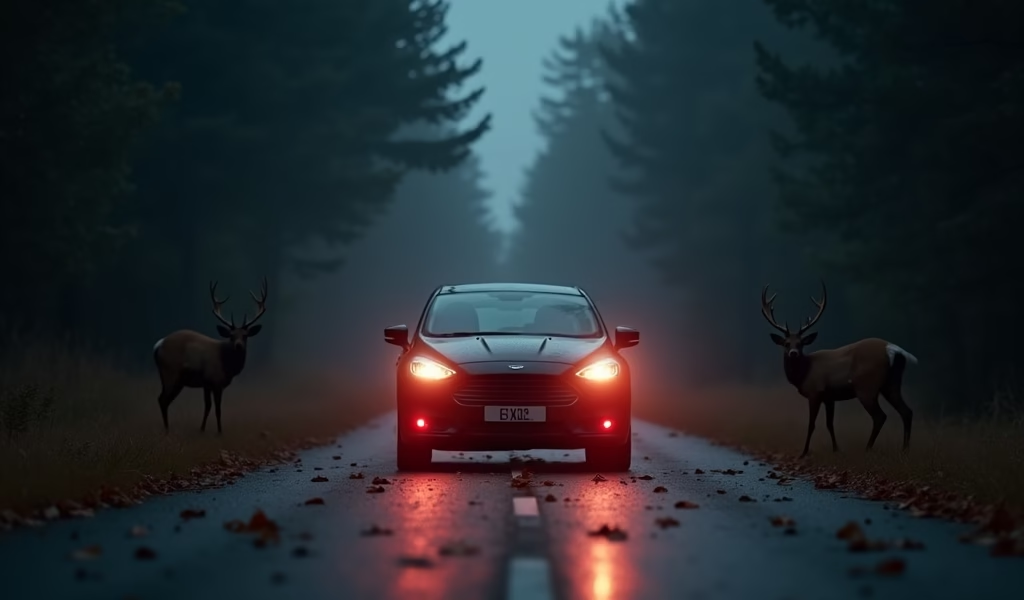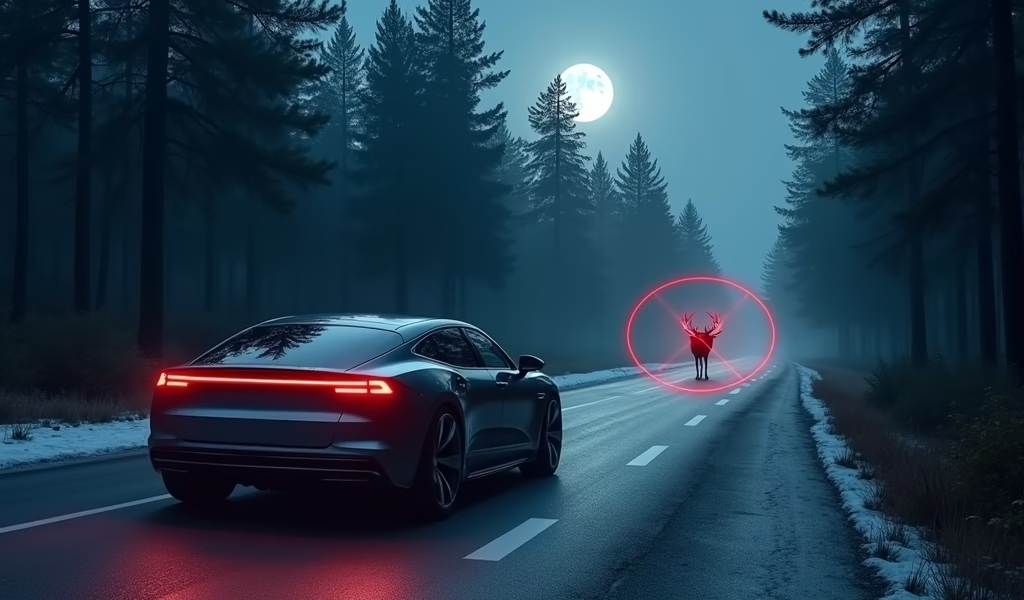Overview
This article provides five expert tips for optimizing animal detection systems in modern vehicles, including keeping sensors clean, understanding system limitations, updating vehicle software, interpreting alerts correctly, and maintaining vigilance as a driver. Written by a master technician with 15 years of experience, it explains how these systems use cameras, radar, and sometimes thermal imaging to detect animals on roadways, potentially preventing some of the 1.5 million annual deer-vehicle collisions in the US.
Table of Contents
- Understanding Animal Detection Capability in Modern Vehicles
- How Animal Detection Systems Work
- Pro Tip #1: Keep Your Sensors Clean
- Pro Tip #2: Understand Your System’s Limitations
- Pro Tip #3: Update Your Vehicle’s Software
- Pro Tip #4: Learn to Interpret Alerts
- Pro Tip #5: Don’t Rely Solely on Technology
- Conclusion
- Frequently Asked Questions
Understanding Animal Detection Capability in Modern Vehicles
Ever had that heart-stopping moment when a deer darts across the road at dusk? I’ve been a master technician for over 15 years, and I can tell you that animal detection systems are among the most valuable safety features in modern vehicles. These intelligent systems use cameras and sensors to spot animals on or near the roadway before you might see them yourself.
Animal collisions aren’t just dangerous—they’re surprisingly common. According to the Insurance Institute for Highway Safety, there are approximately 1.5 million deer-vehicle collisions annually in the United States alone. These accidents cause about 200 human fatalities, thousands of injuries, and over $1 billion in vehicle damage each year.
Today’s animal detection systems combine sophisticated hardware and smart software to give drivers precious extra seconds to react. Throughout this article, I’ll share professional insights on getting the most from this technology, based on my years in the garage and working with the latest automotive safety systems.
How Animal Detection Systems Work
Before diving into optimization tips, let’s pop the hood on how these systems actually function. Animal detection is typically part of a broader pedestrian detection or collision avoidance system, but with specialized algorithms tuned for animal shapes and movements.
Most systems use a combination of forward-facing cameras, radar, and sometimes infrared or thermal imaging sensors. The cameras capture visual data, while radar measures distance and relative speed of objects ahead. Some premium systems incorporate thermal imaging, which is particularly effective at detecting the body heat of animals at night.
Once the hardware collects this data, sophisticated software takes over. The system uses machine learning algorithms trained to recognize animal shapes and movement patterns. When it identifies a potential animal hazard, it calculates the risk of collision based on your vehicle’s speed and trajectory relative to the animal.

Pro Tip #1: Keep Your Sensors Clean
The first and most fundamental tip is something I emphasize to all my customers: keep those sensors clean! Your animal detection system relies entirely on what it can “see” through its camera lenses and sensor covers.
In my workshop, I’ve diagnosed countless “system malfunction” warnings that disappeared after simply cleaning the front camera or radar housing. Road grime, salt spray, insects, and even pollen can all obstruct these sensitive components.
Here’s my professional cleaning routine:
- Locate your forward-facing cameras (typically behind the windshield near the rearview mirror) and radar sensors (often behind the front grille or emblem)
- Use a soft, damp microfiber cloth to gently clean camera lenses
- For external radar sensors, use low-pressure water and mild automotive soap
- Never use harsh chemicals or abrasive materials on any sensors
- Pay special attention to cleaning after driving in muddy conditions or during winter when road salt is common
I’ve seen animal detection performance improve dramatically after a proper sensor cleaning. Make it part of your regular maintenance routine, especially before road trips through rural areas where animal encounters are more likely.
Pro Tip #2: Understand Your System’s Limitations
As a technician who’s worked on vehicles from nearly every manufacturer, I can tell you that not all animal detection systems are created equal. Understanding your specific system’s capabilities and limitations is crucial for safe driving.
Most current systems have a detection range of 100-200 feet ahead, though premium systems may see further. They’re generally most effective at speeds between 20-50 mph. Beyond that, even the best systems may not give you enough reaction time.
Weather and lighting conditions significantly impact performance. Heavy rain, fog, snow, or glaring sunlight can reduce detection reliability. Many systems also struggle in these specific scenarios:
- Animals approaching from the side that suddenly enter your path
- Very small animals (systems are typically calibrated for deer-sized creatures or larger)
- Animals partially obscured by vegetation or terrain
- Multiple animals moving in different directions
Take time to review your owner’s manual for specific information about your vehicle’s system. Some manufacturers like Volvo and Mercedes-Benz have more advanced systems that can detect a wider variety of animals and have better nighttime performance compared to entry-level systems.
Remember that animal detection is a supplementary safety feature similar to cyclist recognition systems. It’s designed to assist you, not replace attentive driving.
Pro Tip #3: Update Your Vehicle’s Software
Here’s something many drivers don’t realize: manufacturers frequently improve their animal detection algorithms through software updates. I’ve seen firsthand how these updates can enhance detection accuracy and response time.
In my garage last month, I updated a 2019 SUV’s software and the owner later reported that the animal detection system identified a coyote that the previous version likely would have missed. These improvements happen because manufacturers constantly refine their machine learning models with new data.
Check for available updates in these ways:
- Schedule regular maintenance visits where technicians can check for and install updates
- For vehicles with over-the-air update capability, ensure your connectivity is active
- Contact your dealer’s service department to inquire about available safety system updates
- Some newer vehicles will notify you when updates are available
Don’t ignore these updates! Unlike some smartphone app updates that just change the interface, automotive safety system updates can genuinely improve functionality and potentially save lives. Manufacturers like Tesla, Volvo, and BMW are particularly proactive with regular software improvements to their detection systems.

Pro Tip #4: Learn to Interpret Alerts
When your animal detection system spots potential danger, how it communicates this information varies by manufacturer. Learning to quickly interpret these alerts can save precious reaction time.
Most systems use a combination of visual, auditory, and haptic (touch-based) warnings. You might see a flashing animal icon on your dashboard or heads-up display, hear a distinctive warning tone, or feel the steering wheel or seat vibrate.
In more advanced systems, the warnings escalate based on collision risk. For example:
- Early warning: A small visual indicator appears when an animal is detected but not in your direct path
- Moderate warning: Louder tones and larger visual alerts when the animal might enter your path
- Urgent warning: Maximum volume alerts, red flashing warnings, and seat/steering vibrations when collision is imminent
Some vehicles will even pre-charge the brakes or apply gentle braking to prepare for emergency stopping. The most advanced systems will automatically brake if you don’t respond quickly enough.
I always recommend that my customers find a safe place (like an empty parking lot) to review their manual’s explanation of these alerts. Some vehicles even have demonstration modes that simulate the warnings without requiring an actual animal.
Being familiar with how your system communicates danger means you won’t waste critical seconds figuring out what those beeps and flashing lights mean when a real animal appears on the road.
Pro Tip #5: Don’t Rely Solely on Technology
As a technician who loves automotive innovation, this might sound strange coming from me: the best animal detection system is still your own awareness. Technology is an excellent backup, but it shouldn’t replace good driving practices.
In my years helping customers after animal collisions, I’ve noticed patterns in when and where these accidents occur. Use these defensive driving techniques in high-risk situations:
- Be especially vigilant at dawn and dusk when animals are most active
- Scan the roadside continuously when driving through wooded areas
- Watch for eye shine when driving at night—animal eyes will reflect your headlights
- When you see one animal cross, slow down and expect others to follow
- Use high beams when appropriate to increase your visual range
- Reduce speed in known animal crossing areas (often marked with warning signs)
I’ve also noticed that using bright auxiliary driving lights can significantly improve your ability to spot animals before your detection system does. Just make sure any aftermarket lighting is properly aimed and legal in your area.
According to NHTSA data, most animal collisions happen on rural roads with speed limits of 55 mph or higher. Simply slowing down in these areas gives both you and your detection system more time to respond.
Conclusion
Animal detection capability represents one of the most practical applications of modern automotive technology. When properly maintained and understood, these systems can prevent costly damage to your vehicle and potentially save lives—both human and animal.
To recap our pro tips: keep your sensors clean, understand your system’s limitations, stay current with software updates, learn to interpret alerts quickly, and maintain your own vigilance as the primary safety system.
As vehicles continue to evolve, we can expect animal detection systems to become even more sophisticated. Future systems will likely detect smaller animals, function better in adverse conditions, and provide more nuanced responses based on animal behavior prediction.
Until then, the combination of attentive driving and well-maintained detection technology gives you the best chance of avoiding unwanted wildlife encounters on the road. As I tell my customers, even the most advanced vehicle still performs best with an alert, informed driver behind the wheel.
Frequently Asked Questions
What animals can vehicle detection systems typically recognize?
Most systems are calibrated primarily for medium to large animals like deer, moose, bears, and large dogs. Smaller animals like raccoons or rabbits might not trigger the system.
Does animal detection work at night?
Yes, but effectiveness varies by system. Vehicles with infrared or thermal imaging have superior nighttime detection compared to camera-only systems.
Will animal detection automatically stop my car?
It depends on your vehicle. Some premium systems will automatically apply emergency braking if a collision is imminent, while others only provide warnings.
How can I test if my animal detection system is working properly?
Most dealerships can perform diagnostic tests during regular maintenance. Never test the system yourself by intentionally approaching animals or having someone imitate an animal.
Will aftermarket modifications affect my animal detection system?
Yes, modifications to your front bumper, grille, or windshield area can potentially interfere with sensors. Always consult with a qualified technician before making changes to these areas.
## Keywords for the Blog Post:
1. Animal detection capability
2. Vehicle safety technology
3. Wildlife collision prevention
4. Automotive sensor maintenance
5. Advanced driver assistance systems

